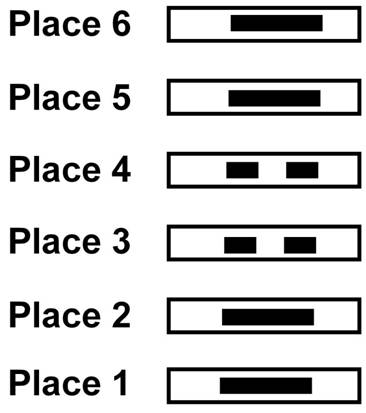Words Attached to the Hexagrams and Lines
1. The decisions refer to the images. The judgments on the lines refer to the changes.
The decisions refer to the images.
This refers directly to the trigrams and the lines which serve to express the ways of the celestial images (stars, zodiac, and moving lights) and the ways of the earth (day and night, firm and yielding, light and dark)
The judgments on the lines refer to the changes.
The unique position and circumstances of individual lines within each hexagram and subsequent trigrams provided the information on which the judgments could be made.
Because the lines change from one hexagram to the next they were referred to as changes.
The lines of the hexagrams do not of themselves change.
It was the changing numbers used in divination that appeared to make them change.
The hexagrams and the lines taken all together are neutral.
They are quiescent and do not move.
It is only when they are stimulated that they contain or reflect the nature of the universe.
As the moving lights change their positions and circumstances they stimulate specific lines and hexagrams, which allows for higher understanding to be obtained about the implications of these changes.
In divination yarrow stalks are used and numbers are counted to accentuate the individual lines and hexagrams and create the sense or process of changing lines.
This would allow the contemplation of celestial wisdom to occur even if one knew nothing of the moving lights.
It would help one to develop true understanding.
2. “Good fortune” and “misfortune” refer to gain and loss, “remorse” and “humiliation” to minor imperfections. “No blame” means that one is in position to correct one’s mistakes in the right way.
“Good fortune” and “misfortune” refer to gain and loss,
When we gain something we can thank our lucky stars or lucky changes.
When we lose something we can blame it on fate or our ill fated stars or unfortunate changes (hexagrams and lines).
“remorse” and “humiliation” to minor imperfections.
Remorse and humiliation occur when we do not live up to our stars or our higher nature, when we do not align to the celestial images, nor to the implications of the hexagrams and lines.
“No blame” means that one is in position to correct one’s mistakes in the right way.
When one has deviated from one’s celestial path, or from the true alignment with the moving lights (or gods), and realizes one’s errors and actual situation, and then makes the adjustments necessary to return to the correct alignment , there will be no blame.
One will return to one’s destined or true path and be in a harmonious or peaceful relationship to the universe and the world on which one stands.
This affirms that guidance comes from the heavens or celestial images, and that the judgments of the hexagrams and lines are meant to assist us and give direction in dealing with life’s changes appropriately.
3. Therefore the classification of superior and inferior is based upon the individual places; the equalizing of great and small is based upon the hexagrams, and the discrimination between good fortune and misfortune is based upon the judgments.

Therefore the classification of superior and inferior is based upon the individual places;
Within each hexagram there are six places which each contain a solid or a broken line by turns.
The lowest place is considered inferior and the highest place is considered superior.
What is above is superior to what is below.
Celestial images are in the heavens above man who is inferior.
Because of this the celestial images are in the appropriate place to guide the affairs of man.
the equalizing of great and small is based upon the hexagrams
Our relationship to the moving lights and the celestial images (zodiac, constellations, stars, etc) occurs in cycles.
Across a cycle great light turns into small light or great darkness which then returns to great light.
Across the entire cycle light and dark are balanced or equalized.
It is only at a specific moment in the cycle that an imbalance occurs for a line.
Each hexagram represents one of sixty-four such moments or phases of a cycle.
the discrimination between good fortune and misfortune is based upon the judgments.
The circumstances of the light and the dark within each hexagram are used to determine the good fortune or misfortune implied.
The discernment or discrimination of these circumstances are presented in the judgments.
The judgments are one section in the interpretation of each hexagram.
4. Concern over remorse and humiliation depends on the borderline. The urge to blamelessness depends on remorse.
Concern over remorse and humiliation depends on the borderline.
The borderline is the balance between light and dark, towards and un-towards, right and wrong, and between that which furthers and that which does not.
The urge to blamelessness depends on remorse.
If one does not experience remorse about deviating from one’s way, one will be unable to approach blamelessness.
Here a primary challenge of relating to the trigrams and the ways of heaven are presented.
If you are blaming others for your circumstances, you are not looking in the right direction or way.
To find true understanding one needs to look up to the heavens.
If in so doing one has remorse for one’s own shortcomings and deviations,
no one else will be blamed.
One’s mistakes will be corrected and no one will be inappropriately disturbed.
5. This is why there are small and great among the hexagrams, and therefore the appended judgments speak of danger or safety. The judgments in each case indicate the trend of development.
This is why there are small and great among the hexagrams,
In the hexagrams or any cycle there are times of great darkness or little light when there is much receptivity, yielding and seeming weakness.
There are also times of great light or little darkness when there is much creativity, firmness and seeming strength.
This is a natural part of any cycle.
From the greatest darkness, light increases.
From the greatest light, darkness increases.
therefore the appended judgments speak of danger or safety.
In phases, we likewise become very strong and firm, and very weak and yielding.
Extremes are not balanced and cannot be maintained for long.
When it is time for change adjustment is required, or one will fall from the correct balance and the way will be lost.
With this in mind one can discern what is safe and what is dangerous.
Through the appended judgments of the hexagrams one can see the safety or danger implied, and thereby make adjustments in one’s own life.
In this way one will hold to the standard of balance.
The judgments in each case indicate the trend of development.
This refers to the sequence of the lines in their places within each hexagram.
It also refers to the natural sequence of events across a cycle.
The judgments explain the phase and its seeming imbalances and present where this is leading to.
Increasing light leads to the time of planting seeds.
Increasing darkness leads to the harvest and the need to be prepared for winter.
